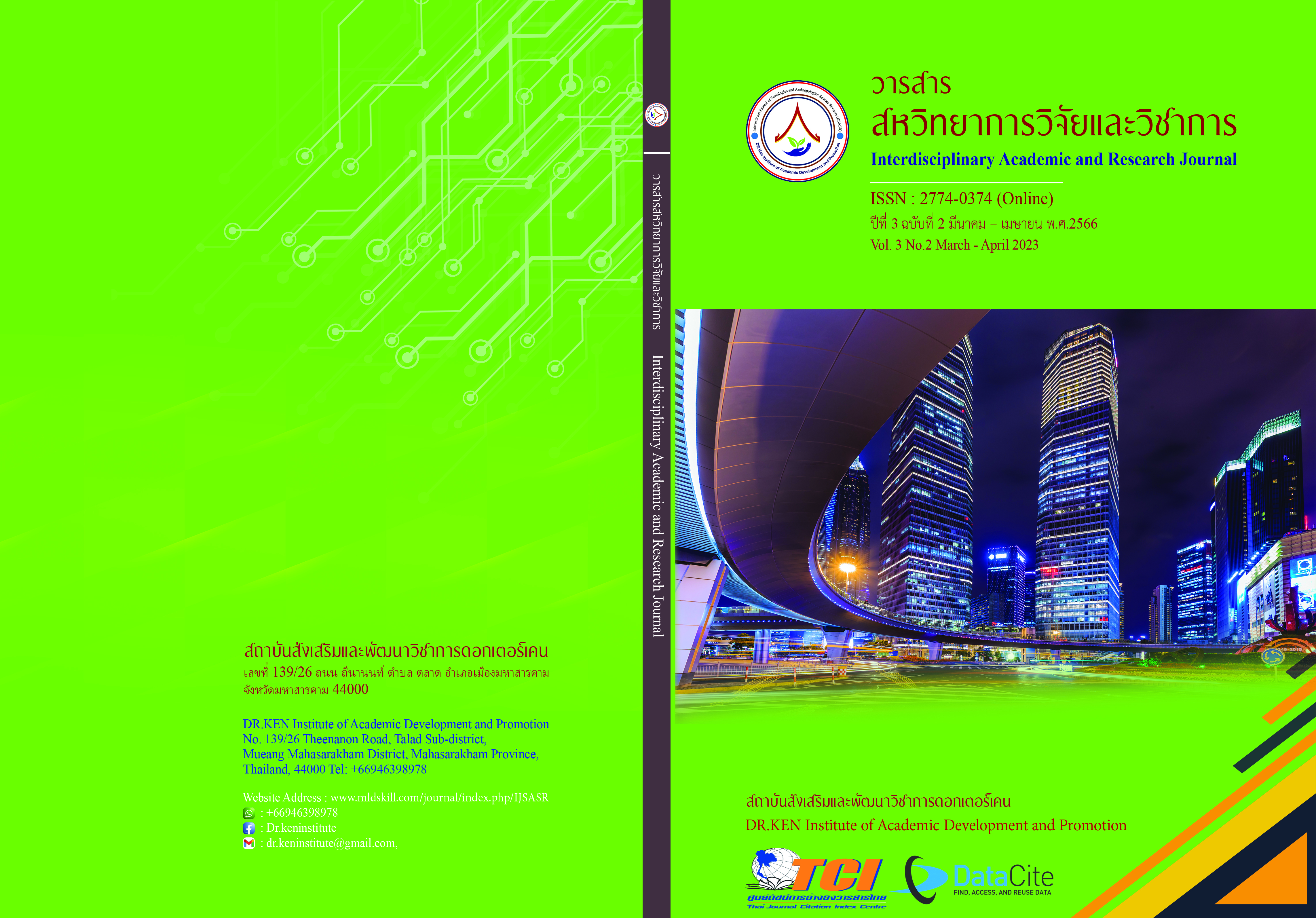Empowerment of Organizations and Social Innovations to Local Development of Prototype Personnel: People of the King, Rajabhat Mahasarakham University
DOI:
https://doi.org/10.14456/iarj.2023.98Keywords:
Corporate Competence; , Social Innovation; , Local DevelopmentAbstract
Upgrading production and developing manpower to become social entrepreneurs according to the needs of the area (Area Based and Community) focuses on creating and developing highly skilled personnel according to local needs, which is one of the preparations of Rajabhat Mahasarakham University to support the development of a Rajabhat University for local development. Thus, this study aims to (1) The organization's ability to contribute to local development, (2) the capacity for social innovation to local development, and (3) the opinions on the importance of local development. This is quantitative research. The research population is the role model personnel of the King for local development. Rajabhat Mahasarakham University, 88 people, and the sample in the research were The King's Model Personnel for Local Development Rajabhat Mahasarakham University, 73 people. The research tools were questionnaires and analyze quantitative data with descriptive research by using frequency, percentage, mean, standard deviation, and qualitative data analysis by descriptive. The results showed that: Prototype personnel, the King's People towards Local Development, Rajabhat Mahasarakham University has an opinion about the capabilities of the organization as a whole, in terms of social innovation leadership, corporate culture building, development to innovators, organizational structure, innovation organization atmosphere in a high level. Prototype personnel, the King's People towards Local Development, Rajabhat Mahasarakham University has an opinion about overall social innovation, community needs a response, change in community trajectory for the better, and spread of innovation to other communities in a high level. Opinion on the importance of local development overall was at the highest level, in terms of social Development, economic development, environmental development, educational Development, and development of art and culture, that is 4 aspects are at the highest level and 1 aspect is at the high level. Therefore, enhancing the capabilities of the organization, and building organizational capabilities to promote social innovation capabilities to local development. The Emphasis should be placed on social innovation leadership, a corporate culture that promotes social innovation, and development of innovators, an organizational structure that promotes the organization of social innovation, and a corporate climate of social innovation to bring about social innovation competence of personnel and contribute to further local development.
References
กระทรวงศึกษาธิการ. (2561). หลักสูตรแกนกลางการศึกษาขั้นพื้นฐาน พุทธศักราช 2551 (ฉบับ. ปรับปรุง พุทธศักราช 2560). กรุงเทพฯ: กระทรวงศึกษาธิการ.
ชื่นฤทัย กาญจนะจิตรา และวาสนา อิ่มเอม. (2546). นวัตกรรมทางสังคม : ทางเลือกเพื่อประเทศไทยรอด. วารสารสถาบันวิจัยระบบสาธารณะสุข, (1), 145.
นงรัตน์ อิสโร (2564). “พระบรมราโชบายด้านการศึกษากับภารกิจของกลุ่มมหาวิทยาลัยราชภัฏในการเป็นสถาบันการศึกษาเพื่อการพัฒนาท้องถิ่น,” วารสารทหารพัฒนา. 45(2), 53-63.
มหาวิทยาลัยราชภัฏมหาสารคาม. (2561). แผนยุทธศาสตร์มหาวิทยาลัยราชภัฏมหาสารคาม ระยะ 20 ปี พ.ศ. 2560-2579. ฉบับได้รับความเห็นชอบจากที่ประชุมสภามหาวิทยาลัยราชภัฏมหาสารคาม วันที่ 21 ธันวาคม 2561.
Barney, J. B. (1991). Firm resources and sustained competitive advantage. Journal of Management. 17(1),99-120.
Christiansen, J. A. (2000). Building the innovative organization: Management systems that encourage innovation. Hampshire: Macmillan Press
Eccles, J. S., & Roeser, R. W. (2011). Schools as Developmental Contexts during Adolescence. Journal of Research on Adolescence. 21 (1), 225-241.
Eisenhard, K. M., & Martin, J. A. (2000). Dynamic Capabilities: What are they?. Strategic Management Journal. 21(1), 1105–1121.
Higgins, J. M. (1995). Innovate or Evaporate: Test & Improve Your Organization’s IQ–Its Innovation Quotient. New York: New Management Publishing Company.
Husted, B. W. and Allen, D. B. (2001). Toward a model of corporate social strategy Formulation, Proceedings of the Social Issues in Management Division at Academy of Management Conference. Washington D.C., Washington, Estados Unidos, 61.
Kantabutra, S., & Avery, G. (2013). Sustainable leadership: Honeybee practices at a leading Asian industrial conglomerate. Asia-Pacific Journal of Business Administration Asia-Pacific J of Bus Admin, 36-56.
Maignan, I., & Ferrell, O. C. (2004). Corporate social Responsibility and Marketing: An Integrative Framework. Journal of the Academy of Marketing Science, 32(1), 3–19. https://doi.org/10.1177/0092070303258971
McKee, Rachel K., & Carlson, B. (2003). The Power to Change. Austin, Texas : Grid International.
Rogers, Everett M. (2003). Diffusion of Innovations. 5th edition. New York: Free Press A Division of Simon & Schuster, Inc.
Schiebel, W., & Pochtrager, S. (2003). Corporate Ethics as a Factor for Success - the Measurement Instrument of the University of Agricultural Sciences. Vienna Supply Chain Management: An International Journal, 8(2), 116-121.
Yamane, T.,. (1973). Statistics: an introductory analysis. New York: New York: Harper & Row.
Downloads
Published
How to Cite
Issue
Section
License
Copyright (c) 2023 ศิรินทร เลียงจินดาถาวร, เขมิกา แสนโสม, อมร โททำ, นาวา มาสวนจิก

This work is licensed under a Creative Commons Attribution-NonCommercial-NoDerivatives 4.0 International License.
Copyright on any article in the Interdisciplinary Academic and Research Journal is retained by the author(s) under the under the Creative Commons Attribution-NonCommercial-NoDerivatives 4.0 International License. Permission to use text, content, images, etc. of publication. Any user to read, download, copy, distribute, print, search, or link to the full texts of articles, crawl them for indexing, pass them as data to software, or use them for any other lawful purpose. But do not use it for commercial use or with the intent to benefit any business.
















.png)


